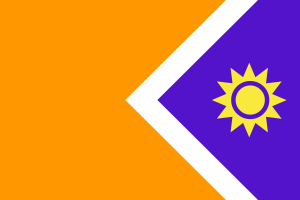Language/Marathi/Culture/Traditions
Introduction
In this lesson, we will explore the rich cultural traditions of Maharashtra, their significance and importance in Marathi culture. The state of Maharashtra is home to a diverse range of communities, each with their unique customs and practices. Maharashtra has a vibrant tradition of art, literature, music, and dance, which is showcased through the numerous festivals celebrated all year round. In this lesson, we will focus on the traditional clothing, dances, and art forms of Maharashtra, and how they form an integral part of Marathi culture.
Traditional Clothing
Maharashtra has a rich heritage of unique traditional clothing, which varies widely across regions and communities. Men and women dress in traditional clothing during festivals and special occasions. In Maharashtra, Sari and Dhoti are the most commonly worn traditional clothing by women and men, respectively. Men wear a shirt or Kurta with a Dhoti, and women wear a nine-yard-long Sari.
The Paithani Sari, made of silk and intricately designed with gold and silver threads, is a prized possession of every Maharashtrian woman. It is not only a symbol of the rich Marathi culture but also a status symbol as it is expensive and requires skilled craftsmanship. Another popular style of Sari is the Nauvari Sari, which is draped in a unique way that distinguishes it from other Sari styles. Usually worn by younger women, it is shorter and wraps around the leg, giving women greater freedom of movement.
Maharashtrian men typically wear a white or pastel-colored Kurta with a Dhoti, which is a rectangular piece of cloth draped around the waist and legs. The Angarakha is another popular traditional clothing style for men. It is a type of Kurta that overlaps and ties at the side, giving it a distinctive look. The men also wear a headgear called the Pheta, which is considered a symbol of pride and honor.
Traditional Dances
Maharashtra has a rich history of traditional dance forms, which are performed during festivals and special occasions. Folk dances have a special place in Marathi culture, as they have been passed down from generations and tell stories of the community's traditions and beliefs.
One of the most popular folk dances of Maharashtra is the Lavani. It originated from the red-light districts of Maharashtra and was performed by women in colorful sarees to entertain men. However, over time, it evolved into a respectable art form and is now considered a significant part of Marathi culture. Lavani is performed by women, who use their expressive dancing and singing skills to convey stories.
Another popular dance form is the Powada, which is a warrior dance. It celebrates the exploits of brave Maratha warriors and their victories. The dancers wear traditional Maratha attire, including a turban, a Dhoti, and a chest plate, and perform acrobatic moves to convey the essence of the warrior culture.
Koli, a dance form of the fishing community, is performed by both men and women. It is a rhythmic dance that involves singing, clapping, and elegant hand and body movements.
Traditional Art Forms
Maharashtra has a rich tradition of art, with several unique art forms that display the state's cultural heritage. Warli, one of the most famous art forms of Maharashtra, is a tribal art form that originated from the Warli tribe of Thane district. It typically involves using white pigment on a red earthen background to create simple geometric shapes and patterns.
Pattachitra, a traditional art form from the Konkan region, involves using natural colors and brushes to create intricate paintings on cloth or paper. The themes of the paintings are usually based on Hindu mythology and depict stories from the Ramayana and Mahabharata.
Another significant art form is Ganjifa, a card game that was once popular among the royalty and nobility of Maharashtra. The cards were circular in shape and decorated with exquisite artwork, often depicting scenes from the epics.
Conclusion
Maharashtra has a rich cultural heritage, and the traditional clothing, dances, and art forms play an important role in preserving and showcasing this heritage. These customs and practices are not only a way of life for Maharashtrians but also an integral part of their identity. Through this lesson, we have explored some of the traditional clothing, dances, and art forms of Maharashtra and gained an insight into the vibrant and colorful culture of this state.

